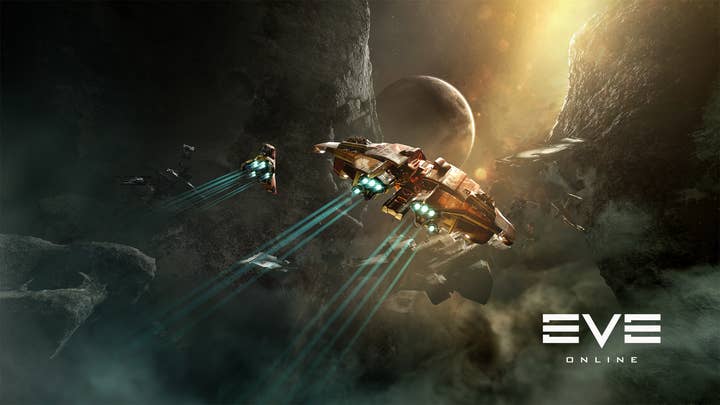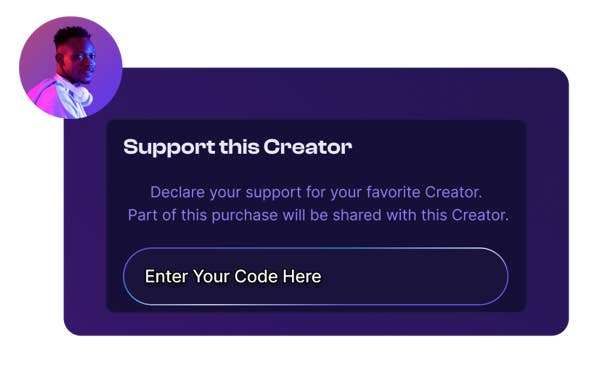How live-service games can develop an on-going sustainable relationship with creators beyond sponsorships
Wehype shares the benefits of Support-A-Creator codes
In this article, we'll discuss how games can increase their customer lifetime value, attract more engaged players, have a higher share of voice on social media, and create more loyal creators with Support-A-Creator codes.
The role of paid sponsorships in a live service world
These days, any publisher (big or small) has at least one person focused solely on building relationships with content creators and talent managements, and this person needs to execute these partnerships as smoothly and cost-efficiently as possible.
Today, these partnerships are primarily transactional. Publishers pay creators to promote their games through sponsored content, showcasing the game to their audience, or giving them early access (which works if the game is hyped enough). This model has proven to be a very efficient way to reach specific audiences. Paid sponsorships are so common today that almost every creator's audience expects them to have them relatively regularly (even if they mostly play one specific game). After all, the creator needs to put food on the table, right?
However, how these paid sponsorships work in practice has remained the same since they started appearing. The publisher pays creator X a certain amount of money, and the creator streams the game Y for 1-2 hours or makes a dedicated video.
Instead, the most significant developments around paid sponsorships have been the underlying data—which creators do we target and why? How will their audience respond to the game?
The leaders in this space use advanced data to pinpoint which creators (and which audiences) will be the most receptive to their game. Ultimately, your biggest hopes will be that the creator wants to keep playing your game after the sponsored segment is done, and two, that their audience converts into paying customers.

In the last couple of years, the industry has shifted increasingly towards ongoing, live service games, with most significant publishers chasing the next big thing. This is to be expected, considering that, when done right, a live service game can prove extraordinarily profitable in the long run. It used to be that shipping the title was the big hurdle to get over; for most games today, that's just the first of many. An excellent live strategy is essential to keep players engaged over long periods. However, it is equally important to consider how you will keep creators engaged.
At Wehype, we've talked for a while about the shift from influencer marketing to creator collaborations. But buzzwords aside, what does that actually mean? For us, it emphasizes a more sustainable, long-term way of engaging creators.
For most live service games (especially on PC and console), there is a strong correlation between their share-of-voice on social platforms and their concurrent users (CCUs). This makes sense when you think about it: the more content creators stream your games, the more people play it. But it is unrealistic to believe that you'll just keep sponsoring content creators 24/7; the costs would be way too high for the unit economics to make sense. There's still a massive need for paid sponsorships, but these are usually concentrated around the larger content drops where you need to maximize exposure quickly.
Amplify your communities through ‘Support-A-Creator codes’
One of the ultimate ways of working long-term with creators is to involve them in the action through revenue sharing with Support-A-Creator codes. This means that creators can earn a percentage of the sales generated through their content when their community uses their code to buy things. This aligns the interests of creators with those of the developers, as both parties benefit from the game’s success.
Unless you've been living under a rock the past couple of months, you might have noticed that Supercell launched their first new game in six years (if you live under a rock, make sure to check it out; it is called Squad Busters, and it is excellent). SquadBusters was launched with open Creator codes, meaning that any interested creator could sign up and, once accepted, could start creating content for the game while sharing their creator codes. Audiences could then support these creators when making purchases within Squad Busters.
Historically, this affiliate marketing has been done mainly by games and publishers: your Supercells, Fortnite, CODs, etc. Developing the needed infrastructure to support codes, payments, analytics, and so on in-house is no small task, and that's just the first step because getting creators onboarded and activated takes work.
But now, with companies such as Wehype offering turn-key solutions on both the infrastructure (codes, creator payments, etc.) and the execution (getting creators onboard and setting them up for success), more and more games are moving towards this creator-led approach.

EVE Online, the long-running space MMORPG, has captivated players for over twenty years. Recently, it partnered with Wehype to add revenue share for its partnered creators through Wehype's Support-A-Creator technology.
“EVE Online is known for its complexity and the dedication required to master it. Our content creators are no different; with a wide array of skills and talents, they make everything from video guides to bespoke applications that manage tens of thousands of players,” explains Peter Farrell, senior community developer at CCP Games. “Suffice it to say they are integral to our community.

By rewarding their hard work and enabling them to diversify their income streams, we're fostering a more engaged and motivated creator community. Our collaboration with Wehype, allowing us to include revenue share, represents a significant step forward in our commitment to supporting our content creators, no matter what they create.
This initiative is about more than just financial rewards; it's about recognizing and empowering the incredible talent within our community, inspiring innovation, and building a brighter future together.”
This means that the audiences of EVE Online's partnered creators can now support their hard work, allowing them to keep doing what they do best: entertain and inform their audiences about this vast, complex space universe.
So, how do Support-A-Creator codes work?
If you're suddenly giving away a % of generated sales, will that not hurt the bottom line (and make your CFO choke on their coffee)? On the contrary, data shows that customers who make purchases while supporting a creator are:
- Likely to spend more the first time buying
- Have a higher lifetime value (LTV)
- Are more engaged players
In addition, Support-A-Creator codes have been shown to convert the "non-buyers"—the customers who are unfazed by your flashy ads and standard marketing methods. This means that your overall customer acquisition costs go down.
This all comes from the end customer coming into your game to support a creator or channel they enjoy watching. In a way, they're helping both the creator and themselves (the creator gets a cut, and the channel the viewer enjoys watching keeps going); by doing so, they feel a stronger emotional connection to the whole experience.
What all of this means in practice is that while you're giving away some % on in-game purchases to your creators, the added benefits you get from more content created, a higher share of voice, players with higher lifetime value, and more players in your game earn that back (and then some).
But what about the creator's point of view? For content creators, Support-A-Creator codes have a lot of benefits:

1. Sustainable Income for Creators:
Instead of relying on sporadic sponsorship deals, revenue sharing provides creators a steady income stream, allowing them to consistently focus on producing high-quality content.
2. Increased Motivation to Promote the Game:
Creators who benefit directly from game sales are more motivated to promote the game genuinely and passionately, leading to more authentic endorsements that resonate with their audiences.
3. Better Alignment of Interests:
- Revenue sharing aligns the goals of developers and creators, ensuring both parties are invested in the game’s success. This fosters a more collaborative and supportive relationship.
- By tying the creator's success to your games, you'll see more content produced, retention, and a happier, loyal creator community.
"I've had a chance to give the Rev Share model a try on a game that my community and I were super excited to play,” begins content creator DannehTV. “I personally found it to be very profitable, and I found that I got more sales and more members into the game as they knew that by purchasing the game, I would be getting a direct kick-back, which is a great way to support me by doing something they may have done already.
Personally, I do think that this model may not be appealing for every game. It makes sense for the rev share to be on a game you plan to play through, or at least for a few days so that you can make the most of the base game and in-game sales."

Dannehtv makes a great point: you can't just slap Creator codes onto a game and expect miracles to happen. Creator codes work when you want to amplify your community and strengthen your relationship with them; it won't make a ‘bad’ game suddenly popular. After all, creators want to entertain while staying authentic, not play a game they don't enjoy while asking their audience to spend money on it.
If you want to learn more about how Wehype's Support-A-Creator can elevate your game, let’s connect. Visit our website or reach out to me on Linkedin

.png?width=70&height=70&fit=crop&quality=60&format=png&auto=webp)